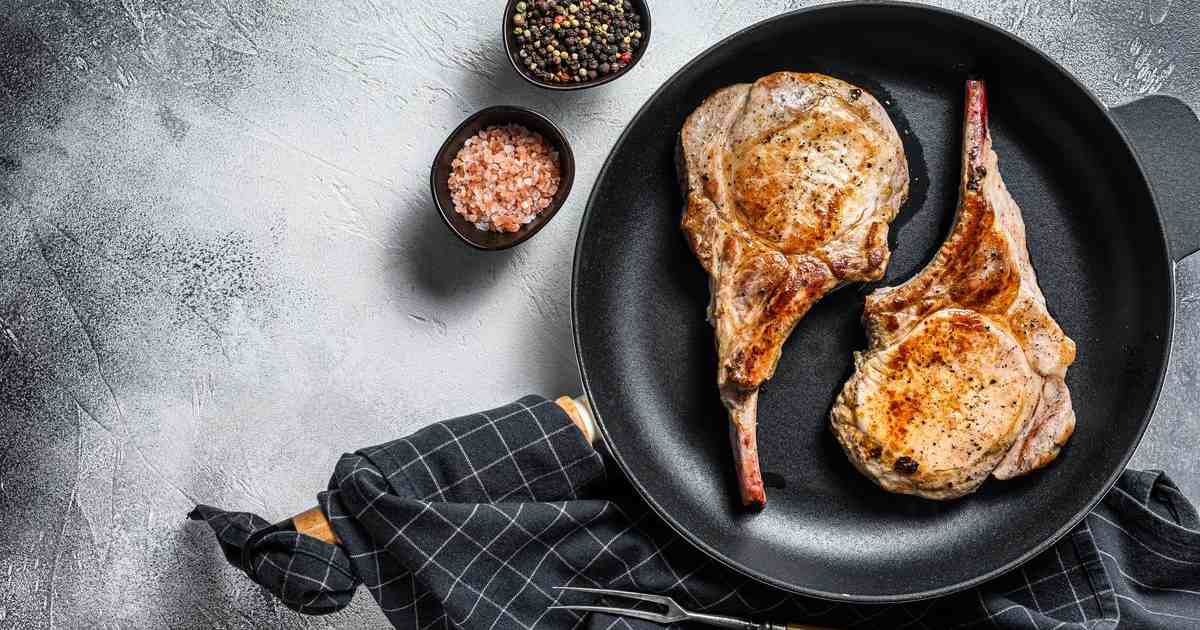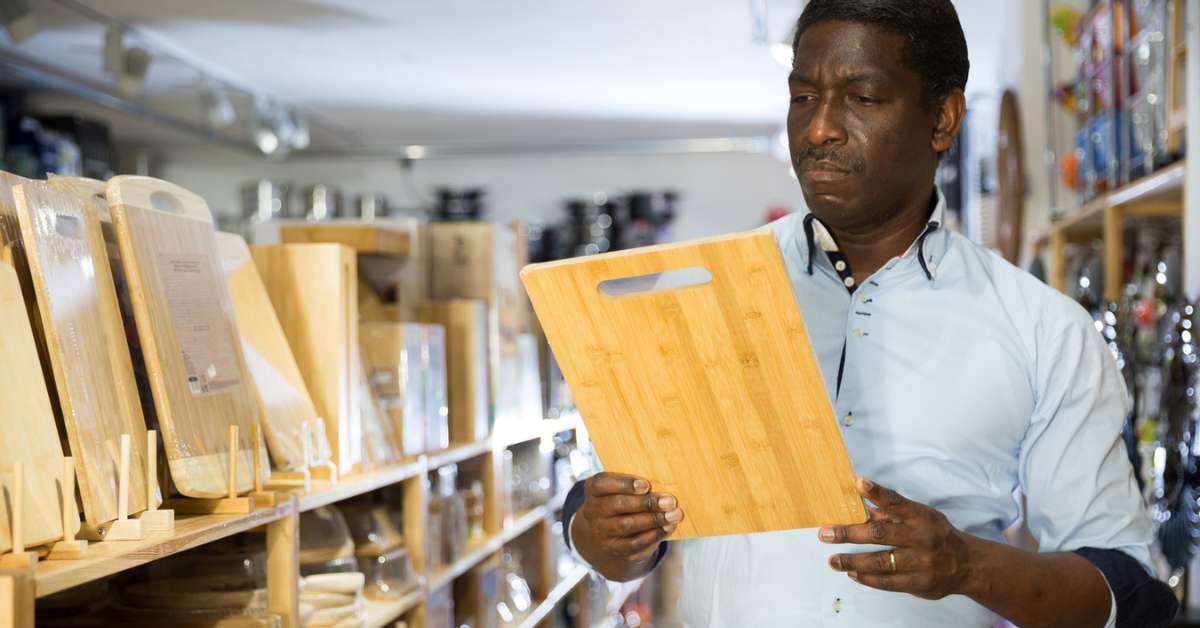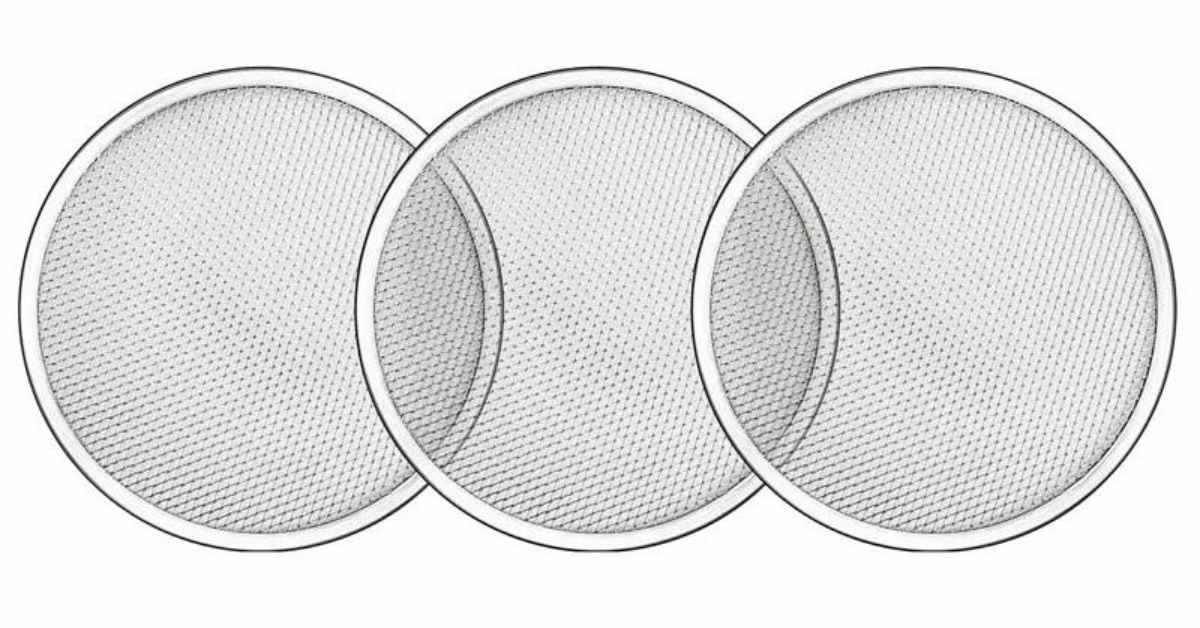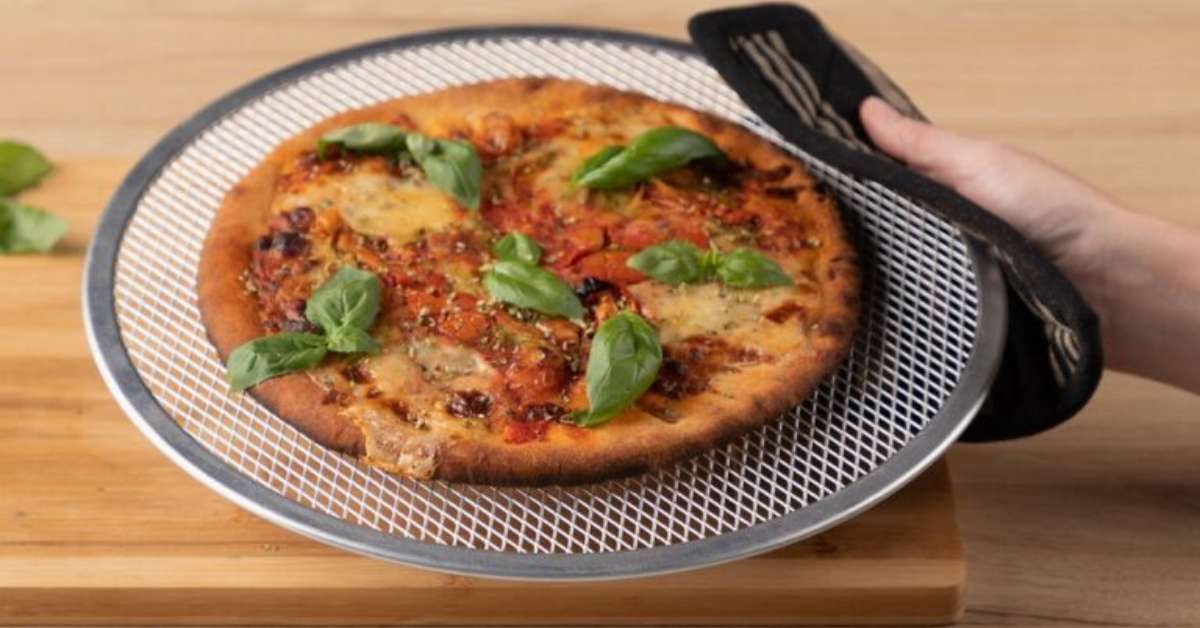Are you a barbecue enthusiast? Do you love indulging in succulent, juicy ribs cooked to perfection? If so, you know the right roasting pan for ribs is essential. Choosing the perfect roasting pan can make all the difference in achieving tender, flavorful ribs that will impress your friends and family.
This comprehensive guide will walk you through everything you need to know to select the ideal roasting pan for ribs. We’ve covered you, from materials and size considerations to features and maintenance tips. So, let’s dive in and discover the ultimate guide to choosing the perfect roasting pan for ribs.
Table of Contents
ToggleTypes of Roasting Pans
Roasting pans come in various types, each offering unique advantages and considerations. Let’s explore some of the most common types of roasting pans:
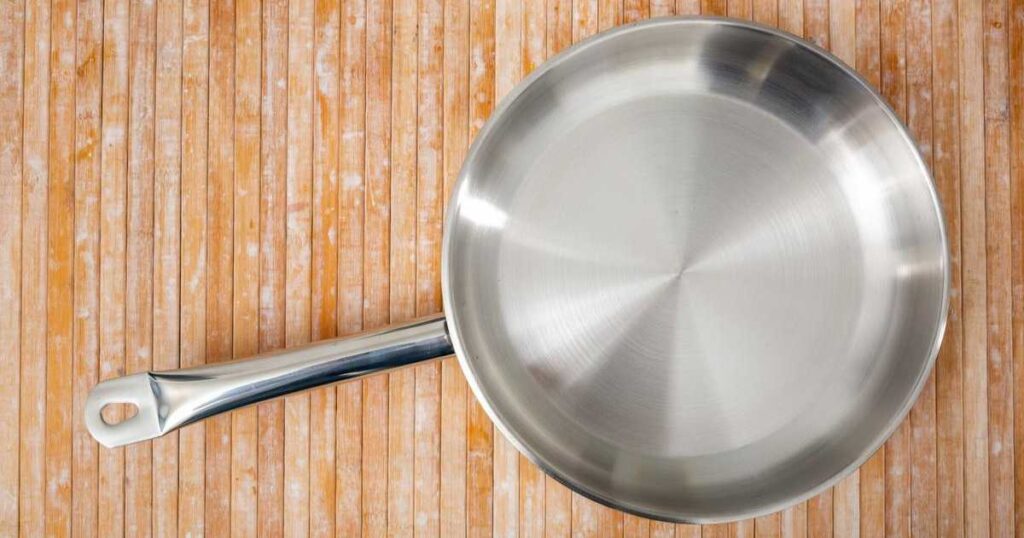
Stainless Steel Roasting Pans
Stainless steel roasting pans are popular among home cooks and professional chefs. They are known for their durability, excellent heat conductivity, and corrosion resistance. Stainless steel pans are versatile and can be used for various cooking tasks, making them a reliable option for roasting ribs.
Cast Iron Roasting Pans
Cast iron roasting pans are beloved for their exceptional heat retention properties. They distribute heat evenly, ensuring that your ribs are cooked consistently. Cast iron pans require proper seasoning and maintenance, but they offer unparalleled heat retention and can impart a distinct flavor to your ribs.
Non-Stick Roasting Pans
Non-stick roasting pans are convenient for easy cleanup and minimal oil or fat usage. These pans feature a non-stick coating that prevents food from sticking, making it effortless to remove the ribs once they are done. However, choosing a high-quality non-stick pan that can withstand high temperatures without compromising its coating is essential.
Disposable Aluminum Roasting Pans
Disposable aluminum roasting pans are a practical option when convenience is a priority. These lightweight pans are affordable and eliminate the need for cleanup, as they can be discarded after use. While they may not offer the same durability and heat distribution as other types, disposable aluminum pans can still produce satisfactory results when roasting ribs.
Consider your cooking preferences, budget, and specific recipe requirements when choosing the type of roasting pan that suits you best. Each type has its benefits, so weigh the pros and cons to make an informed decision that will enhance your rib-roasting experience.
Features of a Perfect Roasting Pan for Ribs
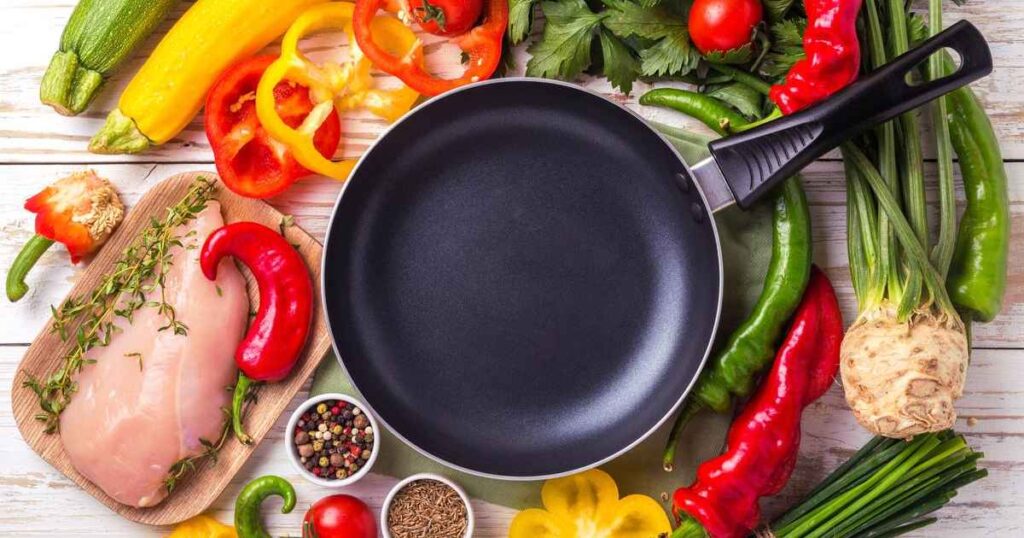
To choose the perfect roasting pan for ribs, it’s essential to consider several vital features that can significantly enhance your cooking experience. Let’s explore these features in detail:
Size and Capacity:
The size of the roasting pan is crucial to ensure that your ribs fit comfortably without overcrowding. A too-small pan may result in uneven cooking, while a vast pan may lead to excessive evaporation and dryness. Consider the number of ribs you typically cook and choose a roasting pan with the appropriate capacity to accommodate them.
Material and Durability:
The roasting pan’s material is vital in its durability and performance. Stainless steel cast iron, and aluminum are popular choices. Stainless steel pans are durable and corrosion-resistant, while cast iron provides excellent heat retention. Aluminum pans are lightweight and heat up quickly. Assess the pros and cons of each material to determine the best fit for your needs.
Heat Conductivity and Retention:
Efficient heat conductivity ensures that your ribs cook evenly throughout. Look for a roasting pan with materials that distribute heat evenly, preventing hot spots and ensuring consistent cooking. Additionally, consider the pan’s heat retention capabilities, as this can affect the tenderness and texture of your ribs.
Handles and Grip:
A well-designed roasting pan should have sturdy and heat-resistant handles that provide a secure grip. This makes moving the pan in and out of the oven more accessible, even when it’s hot. Ergonomic handles with sufficient space for your hands will ensure safety and convenience during cooking.
Rack or No Rack:
Some roasting pans come with a rack, which elevates the ribs above the pan’s base. A rack promotes air circulation, allowing heat to reach all sides of the ribs and resulting in even cooking. If you prefer a crispy crust on your ribs, a rack can help achieve that desirable texture. However, if you prefer the ribs to be cooked directly in the pan’s juices, a roasting pan without a rack may be more suitable.
Easy to Clean:
Cleaning up after cooking is never enjoyable, so opt for a roasting pan that is easy to clean. Look for pans with non-stick coatings or stainless steel surfaces resistant to staining. Dishwasher-safe pans can save time and effort, but checking the manufacturer’s instructions is vital to ensure proper care.
Consider these features when selecting a roasting pan for ribs, considering your cooking preferences and specific needs. By choosing a roasting pan that excels in these areas, you’ll be well on your way to mouthwatering, perfectly cooked ribs every time.
Factors to Consider when Choosing a Roasting Pan for Ribs
When selecting a roasting pan for ribs, there are several factors to consider that can significantly impact your cooking results. Let’s delve into these critical factors:
Cooking Method (Dry Rub, Wet Rub, or Smoking):
The cooking method you prefer for your ribs will influence the type of roasting pan you choose. If you opt for a dry rub, a pan with a rack or elevated design can help promote air circulation and achieve a crispy exterior. For wet rubs or smoking methods, a pan with deeper sides and a tight-fitting lid can help contain the flavors and retain moisture during cooking.
Cooking Time and Temperature:
Consider the cooking time and temperature required for your rib recipe. Some roasting pans are better suited for longer cooking at lower temperatures, while others excel at higher heat levels. Ensure the roasting pan you choose can withstand the temperatures required for your preferred cooking method without warping or compromising its performance.
Ribs Size and Quantity:
The size and quantity of ribs you typically cook will dictate the size of the roasting pan you need. Ensure that the pan can comfortably accommodate the ribs without overcrowding, allowing for even cooking and proper airflow. It’s better to choose a slightly larger pan to have ample space rather than trying to squeeze in too many ribs.
Oven Size and Type:
Consider the size of your oven and its heating capabilities. Ensure that the roasting pan you choose fits comfortably within your oven without any risk of touching the sides or back. Additionally, if you have a convection oven, a roasting pan with high heat conductivity and even heat distribution will complement its performance.
Budget:
Set a budget for your roasting pan and consider the options within that range. Roasting pans come in various price ranges, so determine the features and quality that are most important to you. While investing in a high-quality pan can enhance your cooking experience, affordable options can still deliver satisfactory results.
Considering these factors, you can choose a roasting pan that aligns with your preferred cooking method, accommodates the size and quantity of your ribs, fits your oven, and suits your budget. This thoughtful selection will contribute to the success of your rib-roasting endeavors and ensure a delightful dining experience for you and your guests.
How to Use a Roasting Pan for Ribs
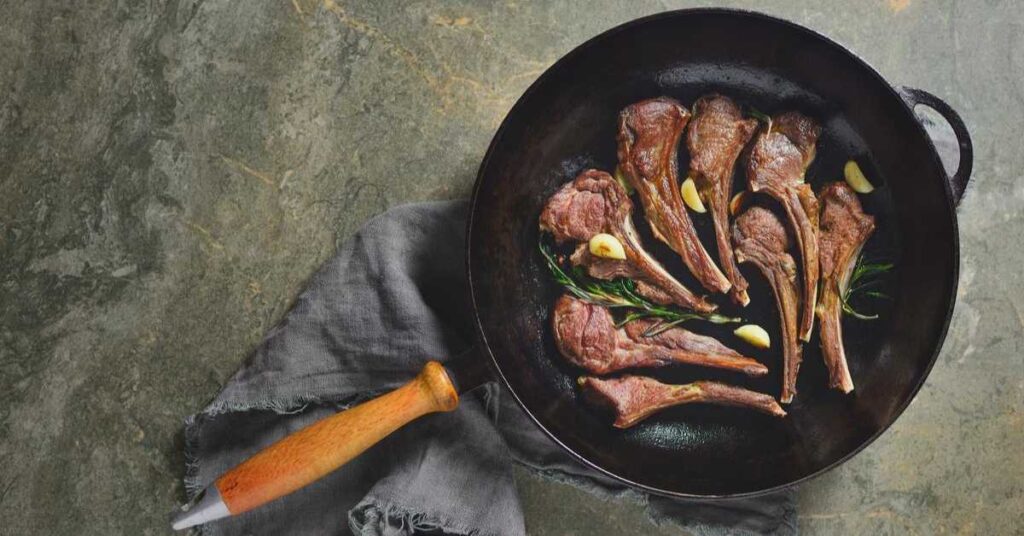
Using a roasting pan for ribs requires proper preparation and attention to detail. Let’s walk through the steps to achieve deliciously cooked ribs:
Preparing the Ribs: Before placing the ribs in the roasting pan, properly prepare them. Remove the membrane from the back of the ribs for better tenderness and flavor penetration. Season the ribs with your preferred dry rub or marinade, ensuring they are evenly coated. Allow the ribs to marinate for at least an hour or overnight in the refrigerator to enhance the flavors.
Preparing the Pan: Prepare the roasting pan by ensuring it is clean and dry. Place a rack in the pan to elevate the ribs and allow for even heat circulation. If not using a rack, apply a light coat of oil or cooking spray to the pan’s surface to prevent the ribs from sticking.
Adding Liquid or Flavorings: Consider adding liquid or flavorings to the roasting pan for enhanced taste and moisture. You can pour in a small amount of broth, beer, wine, or a combination of these liquids to create a flavorful steam during cooking. Additionally, you can add aromatics such as onions, garlic, herbs, or citrus slices to infuse the ribs with extra flavors.
Roasting Time and Temperature: Preheat your oven to the appropriate temperature based on your recipe. Place the prepared roasting pan with the ribs in the oven and allow them to cook according to the recommended cooking time. It’s essential to follow the recipe instructions closely to ensure the ribs are perfectly cooked.
Checking for Doneness: Check the doneness of the ribs using a meat thermometer. The internal temperature should reach around 190°F (88°C) for tender, fall-off-the-bone ribs. Ensure the thermometer is inserted into the thickest part of the meat without touching the bone. You can also visually inspect the ribs for a desired caramelized crust.
Resting and Serving: Once the ribs reach the desired doneness, remove them from the oven and rest for a few minutes. This resting period helps the juices redistribute, producing more flavorful and moist ribs. After resting, carefully transfer the ribs to a cutting board and slice them into portions. Serve your delicious ribs with your favorite side dishes or barbecue sauce.
Following these steps, you can make the most of your roasting pan and create tender, flavorful ribs that impress your family and friends. Enjoy the fruits of your labor and savor the deliciousness of perfectly roasted ribs.
Tips for Maintaining Your Roasting Pan
To ensure the longevity and optimal performance of your roasting pan, it’s essential to follow proper maintenance practices. Here are some helpful tips for maintaining your roasting pan:
Cleaning and Storage:
After each use, clean your roasting pan thoroughly. Allow it to cool down before washing it with warm soapy water. Use a non-abrasive sponge or cloth to avoid scratching the surface. For stubborn food residue, soak the pan in warm water before scrubbing. Once cleaned, ensure the pan is completely dry before storing it to prevent moisture buildup, which can lead to rust or corrosion.
Seasoning Cast Iron Roasting Pans:
If you own a cast iron roasting pan, it’s crucial to season it periodically to maintain its non-stick properties and prevent rust. After cleaning the pan, apply a thin vegetable oil or shortening layer to the surface, including the sides and handle. Place the pan upside down in a preheated oven at a low temperature (around 300°F or 150°C) for about an hour. This process will help create a protective layer that enhances the pan’s performance and prevents food from sticking.
Avoiding Scratches and Damage:
To avoid scratching the surface of your roasting pan, use non-metallic utensils such as silicone or wooden spatulas. Metal utensils can cause scratches, especially in non-stick pans, compromising effectiveness. Additionally, avoid using abrasive cleaners or scouring pads that can damage the pan’s coating or finish.
Using Proper Utensils:
When handling your roasting pan, use oven mitts or potholders to protect your hands from hot surfaces. Avoid placing the pan directly on a countertop or other delicate surfaces to prevent potential heat damage. Instead, use trivets or heat-resistant pads to protect your kitchen surfaces.
Following these maintenance tips, you can keep your roasting pan in excellent condition and extend its lifespan. Proper cleaning, seasoning (for cast iron pans), avoiding scratches, and using the proper utensils will help you enjoy delicious meals with your reliable roasting pan.
Frequently Asked Questions (FAQs)
What pan is best for roasting ribs?
The best pan for roasting ribs depends on personal preference and cooking style. Stainless steel, cast iron, and non-stick pans are popular choices. Stainless steel offers durability and even heat distribution, while cast iron provides excellent heat retention. Non-stick pans are convenient for easy cleanup. Consider your needs and cooking preferences when choosing the best pan for roasting ribs.
Can you use a roasting pan for ribs?
Yes, a roasting pan is an ideal tool for cooking ribs. It provides a spacious cooking vessel with racks, elevated designs, and deep sides that help achieve even heat distribution and promote proper airflow. A roasting pan is designed explicitly for roasting meats, making it a suitable choice for cooking ribs to perfection.
How to cook ribs in a roaster pan?
To cook ribs in a roaster pan, start by preparing the ribs with your preferred seasoning or marinade. Place the ribs in the roasting pan, ensuring they are not overcrowded. If using a rack, place it in the pan before adding the ribs. Roast the ribs in a preheated oven at the recommended temperature and cooking time, following your recipe’s instructions. Use a meat thermometer to check for doneness, and allow the ribs to rest before serving.
How do you use a rib roaster?
To use a rib roaster, place the ribs in the designated slots or grooves on the rib roaster rack, ensuring they are well-supported. Position the rack inside the roaster pan. The rib roaster helps elevate the ribs, allowing for even cooking and creating a flavorful crust. Follow your recipe’s temperature and cooking time instructions, and use a meat thermometer to check for doneness.
What material makes the best roasting pan?
The best material for a roasting pan depends on your specific needs and preferences. Stainless steel pans are durable and offer excellent heat distribution. Cast iron pans provide exceptional heat retention and can flavor the ribs. Non-stick pans are convenient for easy cleanup. Consider the pros and cons of each material and choose the one that aligns with your cooking style and requirements.
Conclusion
Choosing the perfect roasting pan for ribs is essential for achieving succulent, flavorful results. When selecting, consider size, material, heat conductivity, and handles. Different pans, such as stainless steel, cast iron, non-stick, or disposable aluminum, offer unique advantages.
Follow proper maintenance practices to ensure the longevity of your roasting pan, including cleaning and storage, seasoning (for cast iron), and using the right utensils. With the right roasting pan and proper cooking techniques, you can enjoy mouthwatering ribs that impress your family and friends. Happy roasting!

